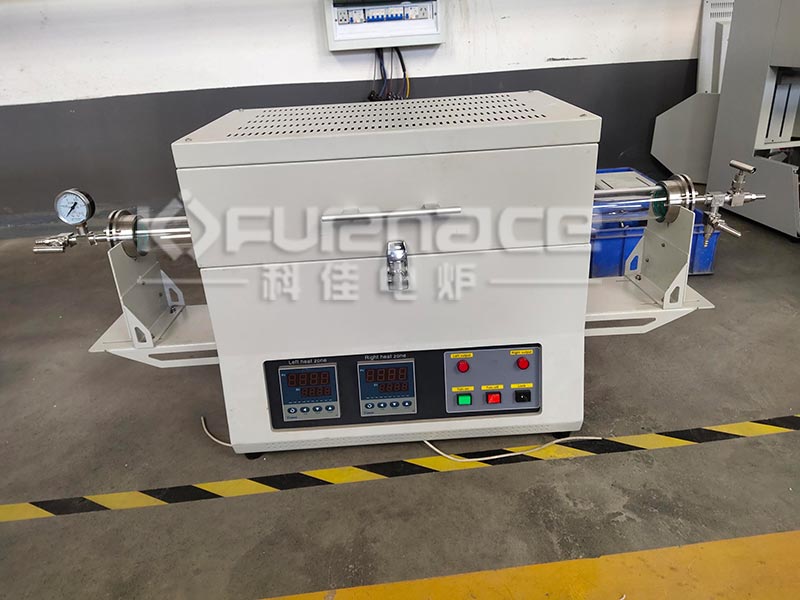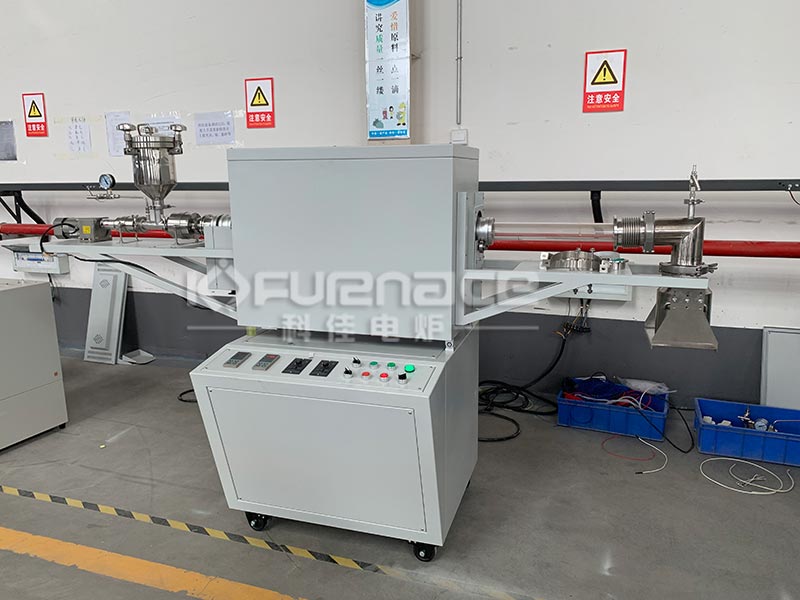Laboratory tube furnace is an important experimental equipment widely used in materials science, chemistry, physics, engineering and other fields. Let’s take a detailed look at the characteristics and applications of experimental tube furnaces below!

Commonly used laboratory dual temperature zone tube furnace (click on the image to view product details)
1. Overview
The laboratory tube furnace is developed using excellent technology and has the characteristics of high performance and high energy saving. It has various furnace types, such as single tube, double tube, horizontal, openable, vertical, etc., as well as multiple temperature zone divisions, such as single temperature zone, double temperature zone, triple temperature zone, etc. These characteristics enable laboratory tube furnaces to meet the needs of different experiments and research.
2. Working principle
The working principle of laboratory tube furnaces mainly involves heat conduction, radiative heat transfer, and convective heat transfer. Among them, radiation heat transfer is the main heat transfer method for high-temperature tube furnaces. When the temperature inside the furnace rises to a certain level, the heating element and tube wall will emit infrared radiation, which directly acts on the surface of the material, causing it to heat up. This heat transfer method has the characteristics of fast speed and high efficiency, and is more suitable for high-temperature sintering processes.
3. Application scope
The laboratory tube furnace is mainly used for high-temperature treatment of samples, such as sintering, melting, pyrolysis, reduction, oxidation, etc. Here are several main application areas:
Materials Science Research: In the preparation process of ceramic materials, high-temperature treatment in a tube furnace can achieve sintering and densification of ceramic materials, thereby improving their mechanical and electrical properties. In addition, laboratory tube furnaces can also be used for the melting and alloying of metal materials, as well as the preparation of composite materials.
Chemical reaction research: By controlling the temperature and atmosphere inside the furnace, various chemical reactions can be achieved, such as pyrolysis, oxidation, reduction, etc. These reactions have a wide range of applications in organic synthesis, inorganic synthesis, catalyst preparation, and other fields.
Physical performance research: Testing the physical properties of materials such as thermal expansion, thermal conductivity, and thermal stability at high temperatures can provide important basis for the practical application of materials.
Engineering application: In metallurgical engineering, high-temperature treatment of ore and metal refining can be achieved through tube furnaces; In ceramic engineering, sintering and forming of ceramic products can be achieved; In environmental engineering, it can be used to treat waste and pollutants.
4. Selection suggestions
When choosing a laboratory tube furnace, the following factors need to be considered:
Maximum temperature requirement: Clearly define the maximum temperature required for the experiment and select the appropriate tube furnace model based on the temperature requirement.
Material temperature resistance: Select appropriate furnace tubes and heating elements based on the temperature resistance of the experimental materials.
Furnace and shell materials: Choose furnace materials with good high temperature resistance and stability, such as ceramic fibers, alumina ceramics, etc. Meanwhile, choose the appropriate furnace shell material based on temperature and usage environment.
Intelligent temperature control system: Priority should be given to tube furnaces with intelligent temperature control systems to ensure temperature accuracy and stability.
Atmosphere control: Choose whether to support atmosphere flow according to experimental requirements, and consider the amount of atmosphere flow and control accuracy.
Safety performance: Choose a tube furnace with safety functions such as over temperature protection and leakage protection to ensure safety during the experimental process.
Durability and stability: Consider the durability of furnace materials and heating elements, as well as the stability of the overall structure, to ensure that the equipment can operate stably for a long time.
After sales service and technical support: Understand the supplier’s after-sales service policy and technical support situation, so that problems encountered during use can be resolved in a timely manner.
5. Maintenance and upkeep
In order to ensure the normal operation and prolong the service life of laboratory tube furnaces, regular maintenance and upkeep are necessary. Here are some suggestions:
Regular inspection: Regularly check the wear and tear of heating elements, furnace tubes, furnaces, and other components, and replace damaged parts in a timely manner.
Cleaning and maintenance: Regularly clean the dust and debris on the surface of the furnace and furnace tubes to keep the equipment clean and dry.
Calibration and Debugging: Regularly calibrate and debug the temperature control system to ensure the accuracy and stability of the temperature.
Pay attention to safety: During the operation, follow the safety operating procedures to avoid accidents.

A commonly used 1600 ℃ experimental rotary tube furnace (click on the image to view product details)
Overall, laboratory tube furnaces are powerful and versatile experimental equipment. By selecting and using laboratory tube furnaces reasonably, the experimental needs of different fields and research directions can be met.Click to learn more laboratory tube furnaces! Or click on online customer service to learn more about product information!